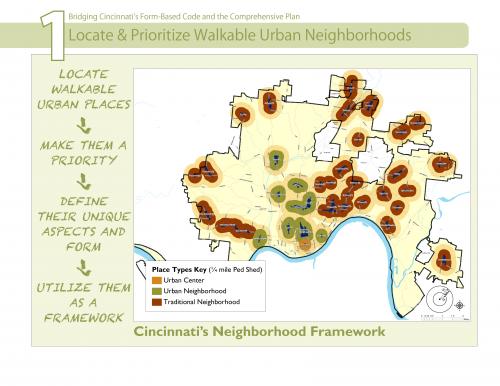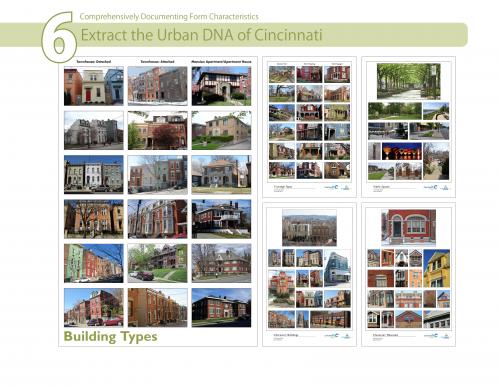
Cincinnati Citywide Form-Based Code
Location: Cincinnati . Urban neighborhood, urban center, traditional neighborhood
LOCATION: Cincinnati, Ohio
DESCRIPTION: This year, in an unusual step, the jury decided to awad a tie for Grand Price. Both projects are groundbreaking in their own way. In this case, the winner is one of the largest applications of form-based coding in the country.
Codes don't happen in a void. Cincinnati Vice Major Rozanne Qualls and Planning Director CHarles Graves put ther weight behind the creation of a form-based code to inspire the revitalization of their urban neighborhoods. A Community Challenge Planning Grant from The Department of Housing and Urban Development (HUD) brought much-needed funds. Opticos Design, led by Dan and Karen Parolek (themselves the authors of Form-Based Codes: A Guide for Planners, Urban Designers, Municipalities, and Developers) took on the task of developing the code for the city.
Cincinnati lost 40% of its population in the ears after 1950, leaving over 10,000 historic units in need of renovation in the urban core. But like many other rust belt cities, this abandonment actually creates a moment of tremendous opportunity. These urban neighborhoods already have what other cities want and are trying to build: A variety of urban housing types, inclduing some of the best mid-rise buildings in the country; a netowrk of neighborhood main streets ready to be revitalized; a rich, diverse, and well-built collection of historic architecture; and accessible open space networks created by the topography that weaves throughout tese neighborhood.
Opticos used the urban-to-rural transect as the organizing principle for the code. Extensive photo documentation and mapping analysis were done to calibrate the transect and ensure that it would reinforce the unique characteristics of Cincinati's urban neighborhoods.
"Since its inception, the New Urbansim has been distinguished by its members' willingness to advance knowledge by sharing experience," wrote juror Elizabeth Plater-Zyberek. "The Cincinnati code is an excellent example of that advancement in the deployment of the SmartCode, with particular attention paid to public process, neighborhood structure and graphic presentation. It reinforces Cincinnati's historic urban patterns with guidance for appropriate infill and predictable redevelopment building."
In May of 2013, the City of Cincinnati unanimously adopted the form-based code, and in the first year two neighborhoods have already elected to use it.
Transect Zone(s): T3 sub-urban.
Status: Plan Approved
Project or Plan's Scale: City
Total built area (in sq. ft.):
Total project cost (in local currency):
Retail area (in sq. ft.):
Office area (in sq. ft.):
Industrial area (in sq. ft.):
Number of hotel units:
Number of residential units (include live/work):
Parks & green space (in acres):
Project team designers: Opticos Design, led by Dan and Karen Parolek developed code
Project team developers: City of Cincinnati
Previous site status:
Starting/Ending date of construction/implementation: -




